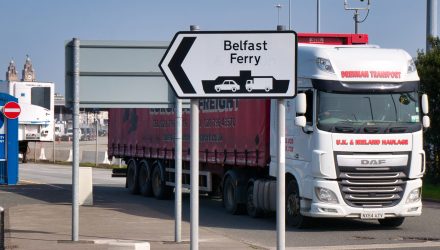Driver fatigue remains one of the most underestimated risks on our roads. Yet only a small proportion of accidents are officially attributed to it because no equivalent to the breathalyser has yet to be developed for tiredness and few people admit to it. UK road safety charity BRAKE estimates, based on a number of individual studies worldwide, that fatigue is responsible for between 10 and 20% of all road crashes worldwide.
The effects of sleep deprivation are not unlike those of alcohol. When people drive tired, reaction times are slow, judgment is clouded and overall performance is lowered, increasing the chances of an accident. If a driver is awake for more than 24 hours, their level of impairment rises to the equivalent of a blood alcohol level of 0.1%, well above the UK drink-drive limit.
Professional drivers are at an increased risk of driving while tired because so much of their time is spent on the road. In spite of EU and UK regulations which restrict drivers’ hours, the problem persists – in accident records where tiredness is given as a cause, four in ten have been caused by a commercial vehicle.
So how should fleets be tackling the problem of drivers suffering from fatigue? While the ultimate goal must be to ensure that drivers take enough rest, it’s also essential to identify fatigued driving so that it can be stopped before an accident happens.
One answer is fatigue-detection technology, which is already up and running in some fleets. While it can’t prevent a tired driver from climbing into the cab, it can spot the signs of fatigue and help to prevent an accident.
Technology to spot tired drivers
Technology has already played an important role in monitoring drivers’ hours in front of the wheel. Tachographs have long been recording driving shifts and ensuring that drivers take regular breaks. The problem is that fatigue isn’t always controlled simply by sticking to an approved number of driving hours. Other factors such as monotonous roads, circadian dips, or simply a poor night’s sleep can all contribute. Lytx data analysis indicates that risk isn’t evenly distributed throughout the week. Early morning hours, for example – particularly Tuesday to Friday from 5am to 6am – appear to be a peak time for fatigue-related incidents.
To identify fatigued drivers accurately, a combination of sophisticated technology and human interaction is required. Intelligent cameras using artificial intelligence can now spot numerous indicators of fatigue in a driver. These include yawning frequency, eye closure duration, blinking rates and head position. Trained on thousands of hours of footage, AI-based video cameras are becoming increasingly accurate.
The first step to incident prevention using this technology is to alert the driver. Issuing an audible alert – or a haptic vibration connected to the driver’s seat – when a sign of fatigue is detected allows the driver to self-correct, whether that means returning to full concentration or taking the opportunity to stop for a break.
The human touch
When a driver continues to operate a vehicle in spite of these warnings, however, it may be that their team needs to be alerted. In these situations, it’s wise to bring in an element of human judgement. Brief clips of fatigue-detected footage will be shared with a monitoring team that can decide whether a driver is in a fit state to continue to drive. In the event that they are considered at risk of fatigue they can be contacted and a replacement driver sent out. Combining AI insights with human review expertise prevents a “computer says no” situation. It ensures that capable drivers aren’t unfairly flagged, while those genuinely at risk receive timely intervention to prevent harm to themselves or other road users. We’ve found that this technology-human combination achieves a high accuracy level of 90%.
Fatigue detection technology can also be integrated into scheduling and HR systems so that trends can be analysed. As previously mentioned, signs of fatigue may be occurring at particular hours of the day or on certain routes. By aggregating this data, managers are able to plan routes better, adapt work schedules and develop rest policies. It also helps with individual coaching and potentially allows drivers who may be suffering from stresses outside of their daily work to be identified and offered support.
Technology can’t prevent fatigued drivers from getting behind the wheel yet, but being able to identify them on the road can bring about a significant improvement in fleet safety, along with associated cost savings. With the right combination of management, education and technology we’ll be one step further towards our goal of ensuring that every trip ends with a safe return.
Author: Oliver Temple, channel sales leader EMEA & APAC, Lytx






